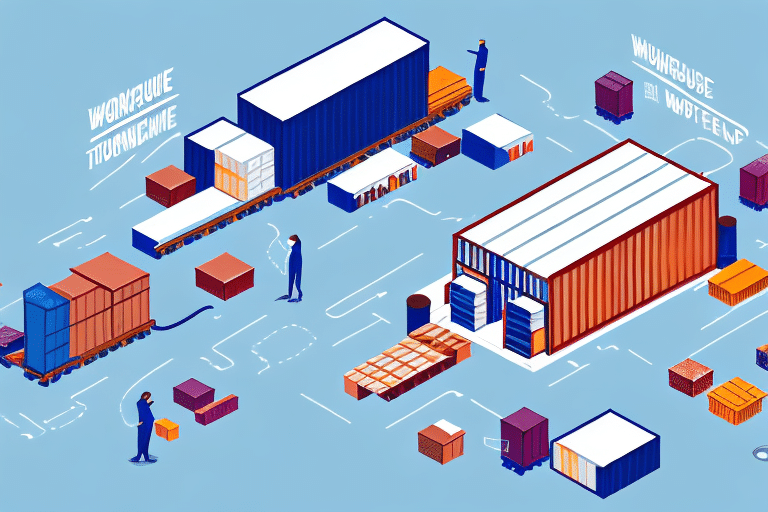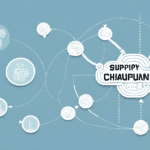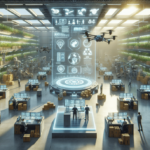Exploring the Benefits of Reverse Logistics Solutions
Reverse logistics has become a cornerstone of modern supply chain management, offering significant advantages for businesses and the environment. This process involves managing the return flow of goods from consumers back to the origin, encompassing activities such as product returns, recycling, and remanufacturing. As consumer expectations for seamless returns rise and sustainability becomes a critical focus, understanding and implementing effective reverse logistics solutions is more important than ever.
The Evolution and Current Importance of Reverse Logistics
Reverse logistics originated in the 1970s, primarily focused on the recovery of defective or damaged products. Over the decades, it has expanded to include the return of unsold merchandise, recycling, and remanufacturing. Today, reverse logistics is integral to customer satisfaction, sustainability efforts, and regulatory compliance.
Modern consumers expect hassle-free return processes, driving businesses to develop efficient reverse logistics systems. Additionally, the push for sustainability compels companies to minimize waste and optimize resource usage, areas where reverse logistics play a pivotal role.
According to a American Express study, effective reverse logistics can lead to a significant reduction in operational costs and enhance customer loyalty.
Economic and Environmental Benefits of Reverse Logistics
Economic Advantages
Implementing reverse logistics solutions can lead to substantial cost savings by reducing waste, recovering valuable materials, and optimizing inventory management. Efficient reverse logistics can also enhance customer relationships by providing seamless return experiences, which can translate into increased sales and repeat business.
For instance, a Forbes article highlights that businesses can save up to 30% in operational costs through optimized reverse logistics processes.
Environmental Advantages
Reverse logistics contributes to environmental sustainability by minimizing landfill waste, reducing the need for raw materials, and lowering carbon emissions. By recycling and remanufacturing products, companies can decrease their environmental footprint and promote a circular economy.
The Environmental Protection Agency emphasizes the role of reverse logistics in achieving sustainable waste management and resource conservation.
Key Elements of a Successful Reverse Logistics Plan
Developing an effective reverse logistics strategy requires careful planning and execution. Critical elements include:
- Returns Management: Identifying and classifying returned products to streamline processing.
- Tracking Systems: Implementing technologies to monitor returns throughout the supply chain.
- Partnerships: Collaborating with recycling and remanufacturing facilities to ensure proper handling of returned goods.
- Inventory Management: Efficiently managing returned products to reduce costs and improve resale opportunities.
- Stakeholder Communication: Ensuring clear communication among customers, suppliers, and internal teams to facilitate smooth reverse logistics operations.
Gathering data through customer surveys and analyzing return reasons can also provide insights to refine the reverse logistics process further.
Technological Innovations Driving Reverse Logistics
Advancements in technology are transforming reverse logistics, making processes more efficient and accurate. Key technologies include:
- Internet of Things (IoT): IoT devices enable real-time tracking of products, enhancing visibility and reducing return rates by identifying issues early.
- Artificial Intelligence (AI) and Machine Learning: AI algorithms can predict return patterns, optimize sorting processes, and improve decision-making in product disposition.
- Blockchain Technology: Blockchain provides transparent and secure tracking of products throughout the reverse supply chain, ensuring data integrity and trust among stakeholders.
- 3D Printing: This technology allows for on-demand production of replacement parts, reducing the need for shipping and minimizing environmental impact.
These innovations not only enhance the efficiency of reverse logistics but also support sustainability goals by reducing waste and optimizing resource usage.
Managing Returns, Recalls, and Repairs
Effective management of returns, recalls, and repairs is essential for maintaining customer trust and operational efficiency. Key practices include:
- Clear Return Policies: Establishing transparent return guidelines to set customer expectations and streamline the returns process.
- Inspection and Sorting: Implementing systematic procedures to inspect, categorize, and process returned products efficiently.
- Repair and Reconditioning: Developing capabilities to repair or refurbish returned items, extending product life cycles and reducing waste.
- Responsible Disposal: Ensuring that products that cannot be reused or recycled are disposed of in compliance with environmental regulations.
Properly managed recalls can prevent legal issues and protect a company's reputation. According to the National Highway Traffic Safety Administration, timely and effective recall management is crucial for maintaining consumer safety and trust.
Best Practices for a Comprehensive Reverse Logistics Strategy
To develop an effective reverse logistics strategy, companies should adopt the following best practices:
- Set Clear Goals: Define specific objectives for the reverse logistics program, such as cost reduction, sustainability targets, or customer satisfaction improvements.
- Establish Metrics: Use key performance indicators (KPIs) to measure the success of reverse logistics activities and identify areas for improvement.
- Create Cross-Functional Teams: Involve stakeholders from various departments to ensure a holistic approach to reverse logistics planning and execution.
- Leverage Data Analytics: Utilize data to gain insights into return patterns, customer behavior, and process efficiencies.
- Continuously Improve: Regularly review and update reverse logistics processes to adapt to changing market conditions and technological advancements.
By adhering to these best practices, businesses can create robust reverse logistics systems that drive long-term success and sustainability.
Case Studies: Success Stories in Reverse Logistics
Several companies have successfully implemented reverse logistics solutions, reaping significant benefits:
- Dell: Dell's closed-loop supply chain focuses on recycling and reusing materials from returned electronics. This initiative has reduced waste and lowered production costs. [Source]
- Ikea: Ikea's take-back program allows customers to return used furniture, which is then refurbished or recycled. This program not only reduces waste but also creates new revenue streams. [Source]
These examples demonstrate how effective reverse logistics can enhance sustainability, reduce costs, and improve customer satisfaction.
Future Trends and Challenges in Reverse Logistics
The landscape of reverse logistics is evolving, with several trends shaping its future:
- Increased Automation: Robotics and automated systems will continue to streamline sorting and processing of returns, enhancing efficiency.
- Advanced Analytics: Predictive analytics will improve the forecasting of return rates and optimize inventory management.
- Enhanced Sustainability Practices: Companies will adopt more sustainable practices, focusing on reducing carbon footprints and promoting circular economies.
- Regulatory Changes: Evolving regulations will require businesses to adapt their reverse logistics strategies to remain compliant.
Challenges such as managing the complexity of global supply chains, handling diverse product types, and maintaining cost-effectiveness will require continuous innovation and strategic planning.
According to a report by McKinsey & Company, integrating advanced technologies and fostering collaboration across the supply chain are essential for overcoming these challenges and capitalizing on the opportunities presented by reverse logistics.
Conclusion
Reverse logistics offers a multitude of benefits for businesses, customers, and the environment. By reducing waste, optimizing resource usage, and enhancing customer satisfaction, reverse logistics contributes to both economic and environmental sustainability. As technology continues to advance, the potential for more efficient and effective reverse logistics solutions will grow, enabling companies to achieve long-term success.
Implementing a comprehensive reverse logistics strategy requires careful planning, collaboration, and a commitment to continuous improvement. By leveraging best practices and embracing technological innovations, businesses can harness the full potential of reverse logistics to drive sustainable growth and maintain a competitive edge in the market.






















